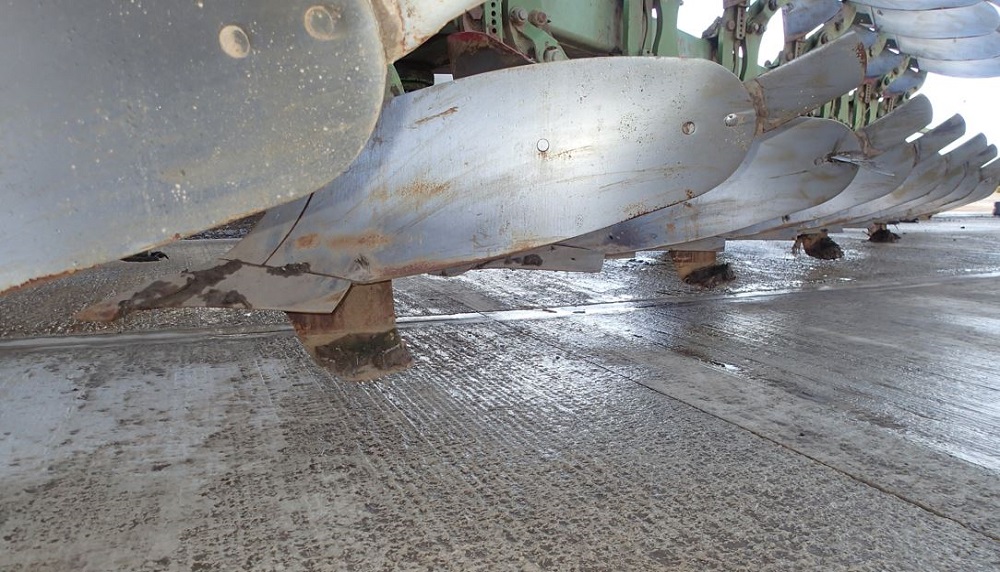- Home
- Knowledge library
- The pros and cons of ploughing arable land
The pros and cons of ploughing arable land
Ploughing is a quick way to change the condition of the soil, but it can lead to longer-term issues. Learn about the benefits and disadvantages of the approach and best-practice measures.
Overview
Ploughing is often the most robust and expensive cultivation option, usually involving pressing and secondary tillage before drilling.
Although plough-based systems often produce good soil physical conditions in the short term, they can degrade soils over time.
It is necessary to plough some soils every year and others when conditions are unsuitable for reduced cultivations. Some soils do not need to be ploughed at all.
The rotation also dictates the need to plough.
Pros and cons of ploughing
Pros:
- Gives a residue-free surface and a ‘clean start’
- Buries weed seeds below emergence depth
- Enhances biological breakdown of residual herbicides
- Loosens compaction down to plough depth
- Can reduce capping and slumping on silty and sandy soils if they are not overworked
- Mineralises nutrients for availability in the following crop
- Option of pressing (flexibility to suit conditions)
- Capable of operation in wetter conditions than other systems
Cons:
- The residue-free surface can be prone to slumping
- Can return buried weed seeds if ploughing is frequent
- Oxidises organic matter, which reduces soil resilience
- High soil disturbance destroys natural supportive structure
- Risk of mineralised nutrients being lost to the atmosphere
- Pressed soil can slump, and loose soil can lose moisture
- High cost, low output (relative to some other options)
Ploughing best practice
Poorly planned ploughing operations waste time and energy.
Ensure conditions, plough setting and timing are appropriate.
Choose subsequent cultivations to suit the soil type, time of year and following crop.
Things to consider when ploughing:
- Set skimmers to effectively bury trash
- Control speed to produce the best finish
- Choose a plough depth to suit the soil type, not tractor capacity
- Ensure that the share width is less than the furrow width
- If and when to press
- Subsoil where deeper loosening is needed
- If choosing a large plough, a semi-mounted option can prevent excessive compaction on headland turns
- Set the plough for effective burial and levelness for even settlement
Subsoiling
- Choose whether to subsoil then plough, or plough then subsoil
- The subsoiler rear packer roll provides a secondary tillage and weatherproofing action, where this operation follows the plough
Loosening units
- Consider using loosening units on plough bodies where soil depth and stone content are not limiting
- Loosening can be on alternate bodies or each body, but it should only be used where needed
- Avoid plough body looseners where soil moisture levels at and beneath plough depth are plastic
Pressing with, or after, ploughing
Pressing a ploughed field has many advantages. It:
- Consolidates soil to a depth that better supports traffic
- Increases bulk strength, which allows more efficient seedbed preparation and clod breakdown
- Can provide a ‘halfway-to-a-seedbed’ surface and make subsequent operations more efficient
- Reduces loss of organic matter through oxidation
- Allows management of the time delay for weathering
- Gives a corrugated, weatherproof surface that is faster drying and takes moisture through more efficiently by capillary action
It is important to:
- Ensure soil moisture is in the friable range and avoid pressing slumping-prone soils unless drilling or planting is imminent
- Set tyre pressures and axle loads as low as safely possible to avoid damage
How weather affects ploughing
Although worked soil can speed up drying, it has greater pore capacity and holds more rain.
It can be impossible to achieve a satisfactory tilth on soils that are either too dry or too wet.
This increases clod formation (and compaction risk in damper situations), especially after ploughing.
If dry soil is ploughed, it minimises structural damage and can drain quicker.
Early-autumn-ploughed soil has more natural drainage channels and is usually drier in spring.
The exception to this is on slumping-prone soils (such as silts and sands), which respond better to later ploughing, followed by immediate cultivation.
High-rainfall regions
In high-rainfall regions, especially in spring, ploughing immediately before cultivation and drilling often produces a better seedbed. This is because soil is drier in this zone when cultivating.
When looking at alternative establishment options, regional climatic effects need careful consideration.
Soils with high silt and clay content
Soils with high silt and clay content need operations to be very carefully timed.
Wet soil
Ploughing wet soil can result in severe structural problems, especially if there is soil surface compaction from previous cropping.
This causes soil to invert as a continuous slice, which can form an anaerobic layer at the plough-share depth.
If the tractor wheel runs in the base of the furrow, wheel slip can occur. This form of compaction is greater in wet conditions or with high draft forces.
The plough share can also cause localised soil smearing when wet. This makes the plough-depth layer more resistant to water and root passage.
Keep tractor wheels on the surface to reduce compaction, especially when using higher-powered tractors (on-land, as opposed to in-furrow).
Steering guidance can help.
 Wright Resolutions Limited
Wright Resolutions Limited

